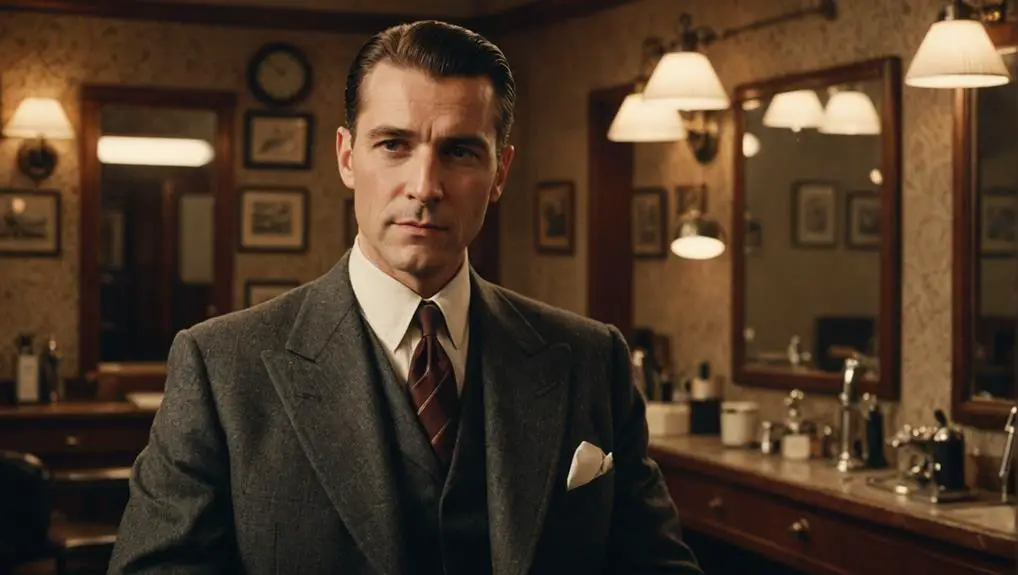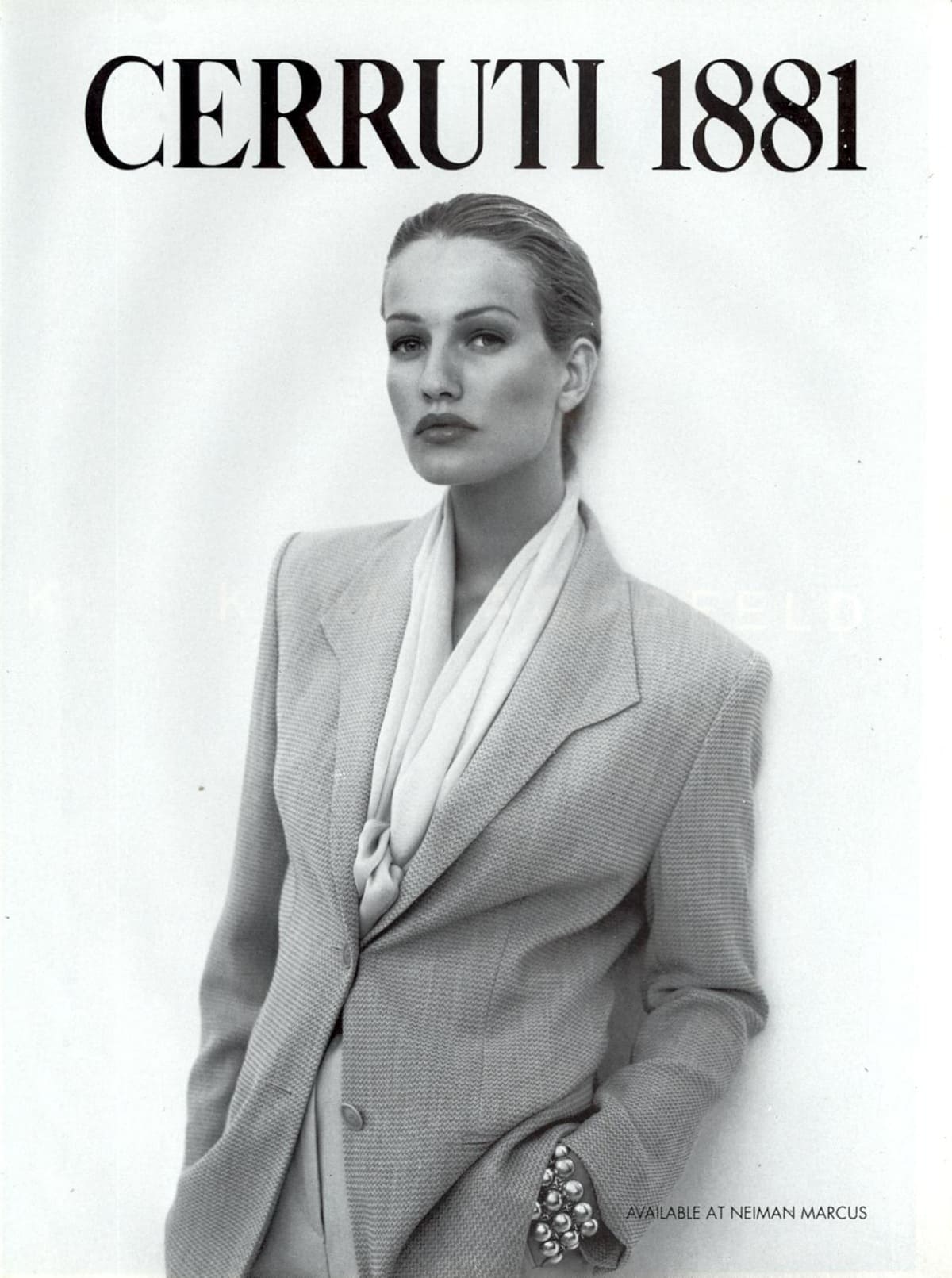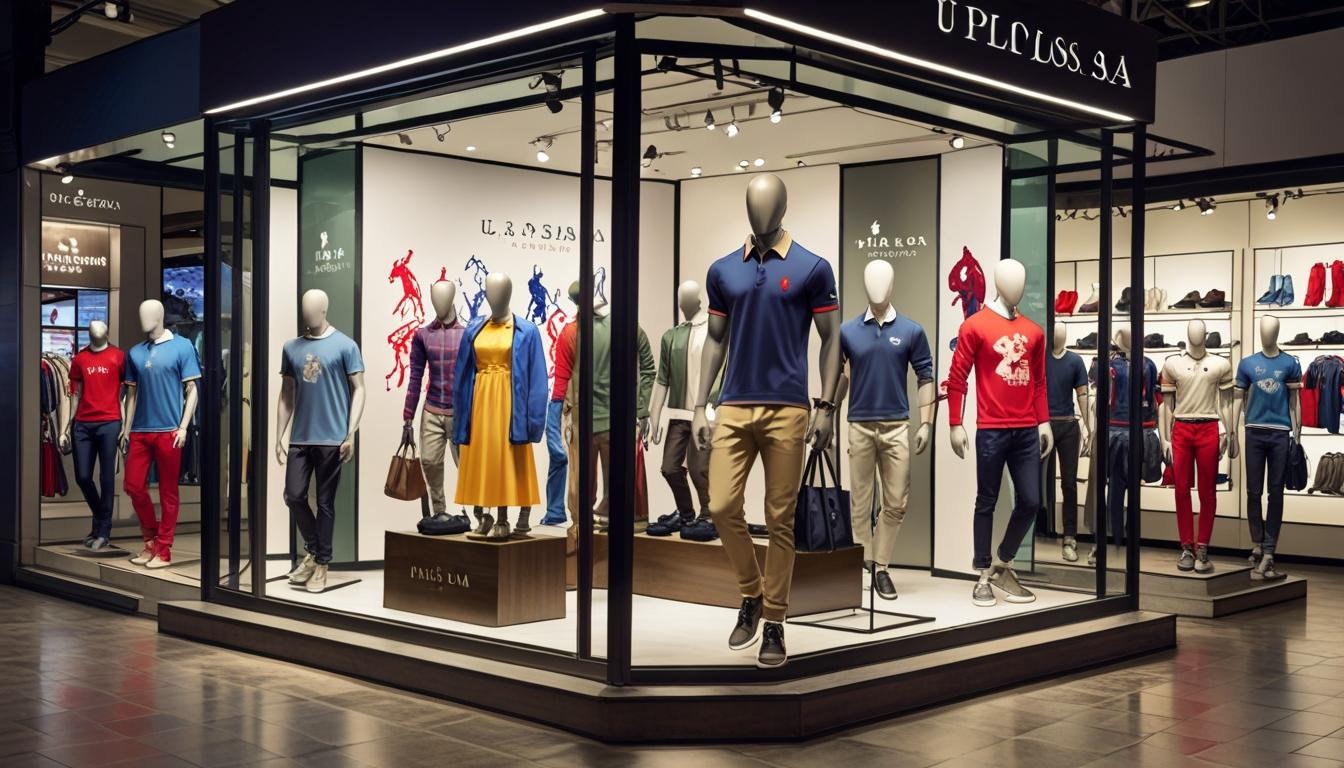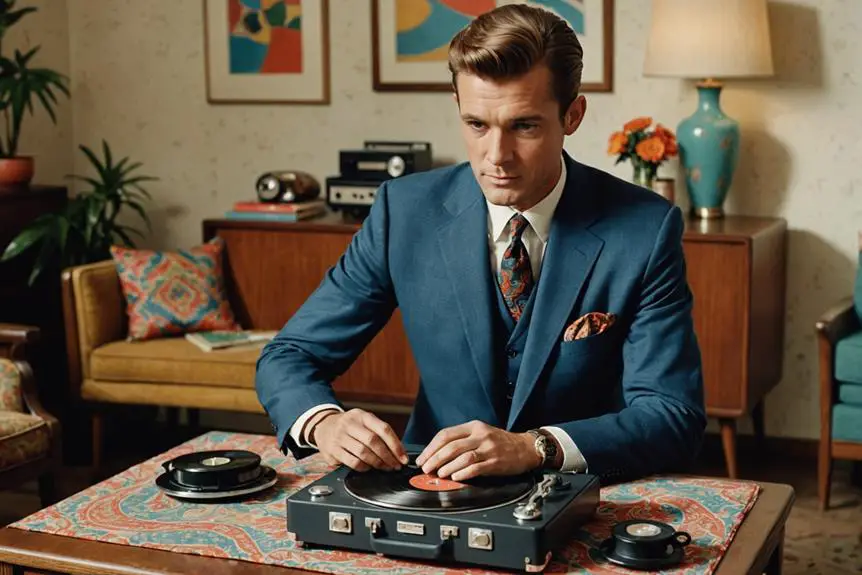In the 1940s, men's collar pins became essential accessories that enhanced the refined style of the era. These pins, particularly in a barbell design, secured tie knots and guaranteed a crisp look, reflecting a cultural shift toward polished presentation. Their durable materials featured polished finishes, adding sophistication to outfits. Shifting from collar buttons, these pins complemented the softer collar styles of post-World War I fashion. By offering both practicality and aesthetic appeal, collar pins became a staple for the meticulous dresser. If you're curious about their styling tips and maintenance, you'll find even more insight worth exploring.
Overview of Collar Pins
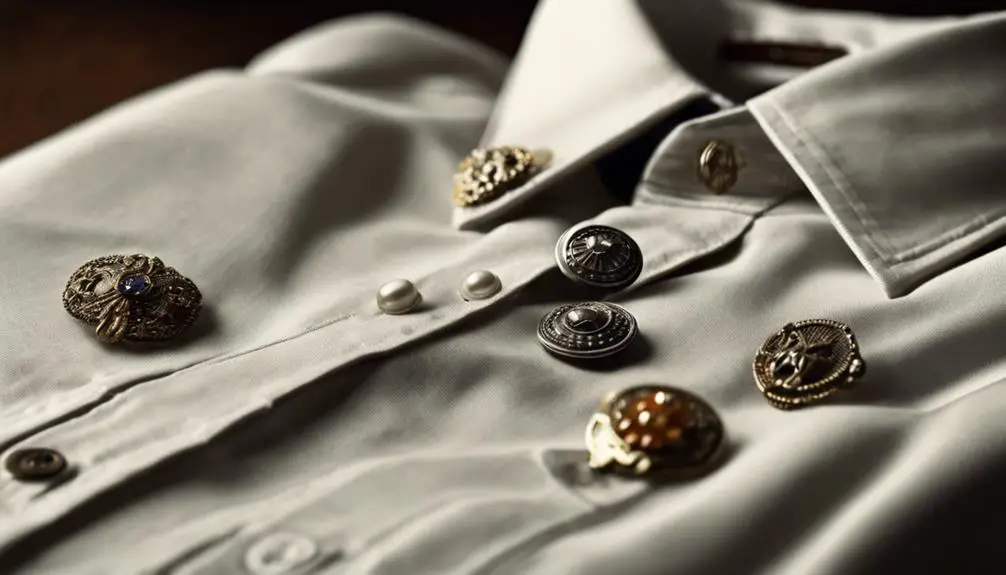
Collar pins emerged as a fashionable statement in the 1940s, seamlessly blending practicality with style. These stylish accessories played a significant role in maintaining the crisp appearance of men's shirts, particularly during formal occasions. Designed primarily in a barbell style, collar pins allowed you to securely fasten the collar leaves behind the tie knot, eliminating the need for additional collar tabs.
The introduction of collar pins reflected a notable shift in men's fashion, adapting to the softer collar designs that gained popularity after World War I. Made from durable materials, these pins often featured polished finishes that added a touch of elegance to any outfit. Whether you were dressing for a business meeting or a special event, collar pins enhanced your overall look, reinforcing the values of neatness and formality that defined 1940s fashion culture.
Incorporating collar pins into your mens attire not only elevated your appearance but also signified a commitment to meticulous grooming. As you navigate through the fashion landscape of the 1940s, you'll find that these small yet impactful accessories are essential for achieving a polished and sophisticated look.
Key Features and Benefits
Enhancing your formal attire, collar pins from the 1940s offered both structural support and a refined aesthetic. These accessories were designed to pierce the collar fabric, ensuring that your tie knot remained crisp and well-structured throughout the day. With styles such as barbell or stickpin, attaching and adjusting these collar pins to various collar types was effortless, catering to the diverse fashions of the era.
Crafted from durable materials, 1940s collar pins typically showcased a polished silver or gold finish. This touch of elegance added a layer of sophistication to your formal attire, making it ideal for significant occasions like weddings and parties. The mid-20th century fashion trends emphasized neatness and sophistication, and collar pins were essential in meeting these standards.
Beyond their functional aspect, collar pins served as decorative elements, enhancing the overall aesthetic of men's outfits. They allowed you to express your personal style while adhering to the time's sartorial expectations. Combining practicality with fashion, collar pins from the 1940s proved to be indispensable accessories that elevated the appearance of any ensemble.
Historical Significance
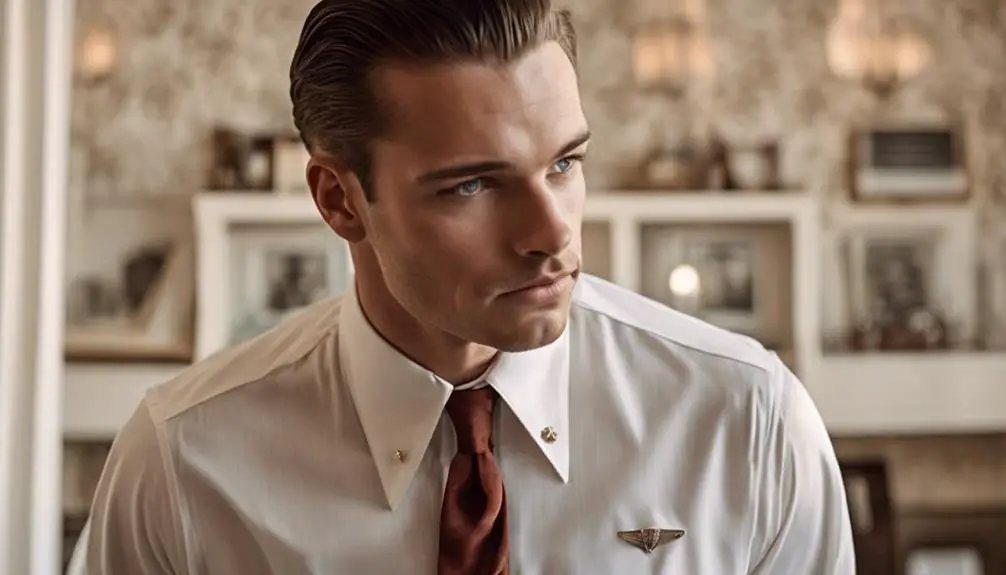
As fashion evolved throughout the 1940s, the rise of collar pins signified a pivotal moment in men's formal wear, emphasizing not only style but also the importance of presentation. Collar pins became essential accessories, ensuring a crisp appearance in an era that favored neatness and tailored looks. This shift from earlier collar buttons to collar pins reflected changing trends in men's fashion, particularly as soft collars gained popularity.
Crafted from gold or silver, collar pins added an unmistakable touch of sophistication and elegance to formal wear. They elevated the overall aesthetic, allowing men to express their attention to detail and commitment to timeless style. The introduction of the collar bar during this decade further enhanced the functionality of collar pins, enabling ties to be worn without traditional collar tabs and ensuring a polished look.
Ultimately, the widespread adoption of collar pins among gentlemen during the 1940s represented not just a fashion statement, but a cultural shift towards valuing meticulous presentation. These small yet significant accessories encapsulated the era's ideals of sophistication and elegance, marking a transformative period in men's formal wear history.
Styling Tips for Use
Wearing collar pins can elevate your formal attire, adding a refined touch that distinguishes your look. To achieve a polished appearance with your collar pin, consider these styling tips:
- Position your collar pin underneath the tie knot to lift the tie and maintain structure.
- Opt for slimmer tie knots, like the Four-in-Hand or Oriental, to avoid bulging fabric when using a collar pin.
- Select a collar pin that's appropriately sized; too small can pinch and wrinkle your collar, while too large may hang awkwardly.
Incorporating a vintage-style collar pin can enhance the elegance of your mens shirts, making them stand out in casual settings or business formal events. Stick to simple, timeless designs to guarantee an understated elegance that complements your overall look. Remember, collar pins aren't suitable for Black Tie or White Tie attire; instead, they shine best in more relaxed environments where you want to make a subtle statement. With these tips, you'll confidently showcase your collar pin, enhancing your outfit while embracing a touch of classic charm.
Maintenance and Care
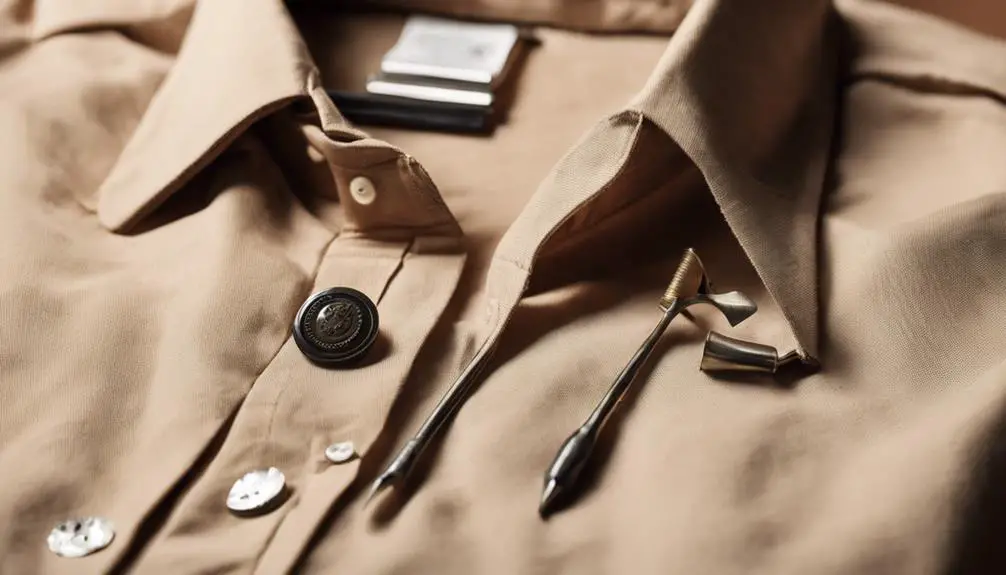
Maintaining the allure of vintage collar pins from the 1940s requires a thoughtful approach to care and preservation. To keep your collar pin looking its best, clean it regularly with a soft, dry cloth to prevent tarnishing. This simple maintenance task helps maintain the luster that defines these unique accessories.
Store your collar pins in a cool, dry place, avoiding exposure to moisture and harsh chemicals that can damage their delicate finish. Regular polishing is essential, especially for pins made from silver or other metals, ensuring they retain their vintage charm.
Don't forget to inspect your collar pins periodically for any signs of wear or damage. Addressing issues promptly can prolong their life and functionality, allowing you to enjoy them for years to come. When cleaning, steer clear of abrasive materials or harsh cleaners, as these can scratch and diminish the aesthetic appeal of your beloved vintage pieces.
Frequently Asked Questions
When Were Collar Pins Popular?
Collar pins gained popularity primarily in the mid-20th century, enhancing formal attire. You'll find they peaked during the 1940s, as fashion evolved to embrace both functionality and style in men's dress accessories.
What Are Those Collar Pins Called?
Those collar pins are often called collar bars or collar pins. They're designed to secure your collar while adding a stylish touch, enhancing the overall appearance of your formal attire with a sophisticated flair.
What Is the Point of a Collar Pin?
A collar pin keeps your collar structured and aligned, enhancing your overall appearance. It adds elegance to your outfit, ensuring your shirt and tie present a polished, refined look, reflecting your attention to detail.
How Do You Wear a Collar Bar Pin?
To wear a collar bar pin, position it horizontally between your collar points, thread each end through pre-made holes or pierce the fabric, ensuring it sits behind your tie knot for a polished appearance.
